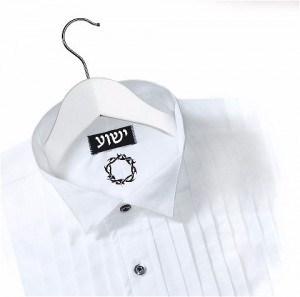Very soon Jewish communities in Israel and worldwide will celebrate Purim – a cheerful holiday in commemoration of the miraculous deliverance of Persian Jews during the rule of King Ahasuerus (historically, it was most likely King Xerxes the First). The background events are described in the Tanakh, in the Book of Esther. Among the Purim customs are the reading of the scroll of Esther and the  Torah; sending refreshments to friends; giving gifts to the poor; a bountiful meal; merry-making; and a ban on fasting. All of these are mentioned in the Book of Esther (9:20-22, 28), where Mordechai tells the story and instructs all the Jews of the empire to celebrate this holiday every year.
Torah; sending refreshments to friends; giving gifts to the poor; a bountiful meal; merry-making; and a ban on fasting. All of these are mentioned in the Book of Esther (9:20-22, 28), where Mordechai tells the story and instructs all the Jews of the empire to celebrate this holiday every year.
Since the Book of Esther does not mention God’s name at all, many speak of the book’s “secular” character, but that is not accurate. In the book, Ahasuerus is mentioned by name about two hundred times, and one might think it is this king who makes all the decisions. However, careful reading reveals that Ahasuerus is a mere tool in the hand of Almighty God. True, each character in the book is moved by his or her personal motives, and the events take a natural course, but all of them are fulfilling the divine plan.
So let’s imagine you read carefully the holiday’s “words of institution” found at the end of the 9th chapter of Esther. Let us also imagine that you have visited Israel at the time of Purim, and therefore have wondered about the origin of some traditions that seem strange. For example, why do Jews wear costumes? Admittedly, ultra-Orthodox Jews don’t follow this tradition, yet one can find on the Internet a photo of a large family from Mea She’arim – an ultra-Orthodox Jerusalem neighborhood – who are all dressed in Santa Claus costumes.
Yes, the tradition of wearing costumes on Purim is adopted, most likely  from Italy – the country of carnivals – and has made its way into Israeli society, whether we like it or not. To me, the more important question is whether a tradition serves us, or we serve it. Indeed, everything can be used for good purposes or for bad ones, depending on attitude, ethics, and intentions. For example, when a child wants to dress up as a skeleton, this is an opportunity for parents to talk to him or her about the essence of the holiday. Don’t we celebrate the miracle of our people’s deliverance from death? If so, why wear something that symbolizes death?
from Italy – the country of carnivals – and has made its way into Israeli society, whether we like it or not. To me, the more important question is whether a tradition serves us, or we serve it. Indeed, everything can be used for good purposes or for bad ones, depending on attitude, ethics, and intentions. For example, when a child wants to dress up as a skeleton, this is an opportunity for parents to talk to him or her about the essence of the holiday. Don’t we celebrate the miracle of our people’s deliverance from death? If so, why wear something that symbolizes death?
I like the Purim celebrations in our Messianic congregation.
Sometimes the pastor comes dressed as John the Baptist, and you can easily guess the call he issues. Other times he appears as Moses, with the tablets of the Law. Have you ever noticed what “costume” believers are called to dress in? Romans 13:14 tells us to “put on” Yeshua; Ephesians 6:11, to put on the full armor of God; and 1 Peter 5:5, to put on humility. If we obey these commandments, it doesn’t matter if we stick with the Purim tradition or not. After all, we are called to wear the perfect divine garments all the time. That’s the costume we should be concerned about. Let’s make sure no one can say about us what they said about the king in Hans Christian Andersen’s famous fairy tale: “The king is naked!”
“As God’s chosen people, holy and dearly loved, clothe yourselves with compassion, kindness, humility, gentleness and patience. Bear with each other and forgive one another if any of you has a grievance against someone. Forgive as the Lord forgave you. And over all these virtues put on love, which binds them all together in perfect unity” (Col. 3:12-14).
Rita Kontorovich